Excerpts from Jim Conrad's
Naturalist Newsletter
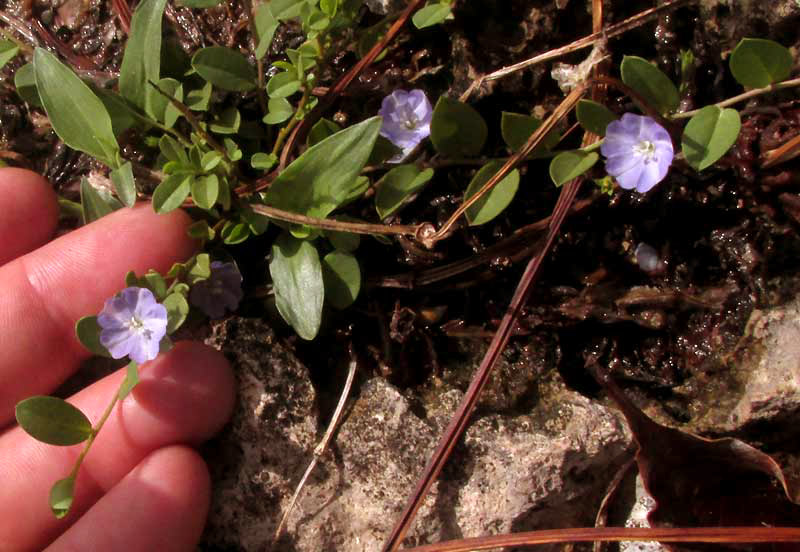
from the June 21, 2015 Newsletter issued from Río Lagartos, on the Yucatan Peninsula's northern coast (~N21.60°, ~W88.16°), Yucatán state, MÉXICO
DWARF BINDWEED
These days when many plants are flowering after the rainy season's first rains, I'm looking especially hard for rare, narrowly endemic plants. One of the best environments in which to find such species is where the soil is very thin atop limestone bedrock. Such soils dry to a hard crust when it doesn't rain, yet next to the mangroves they may be submerged for long periods during the rainy season. Only some plant species can survive such extreme environmental conditions.
So, this week when a small, delicate-looking herbaceous plant I hadn't seen before turned up under such conditions, I was eager "to do the botany." Above you can see it in its rocky habitat. Up close the leaves looked semi-succulent, and the corollas were shaped like saucers shallowly lobed along their margins. The corollas' surfaces displayed curious "pleats" radiating from their centers, as seen below:
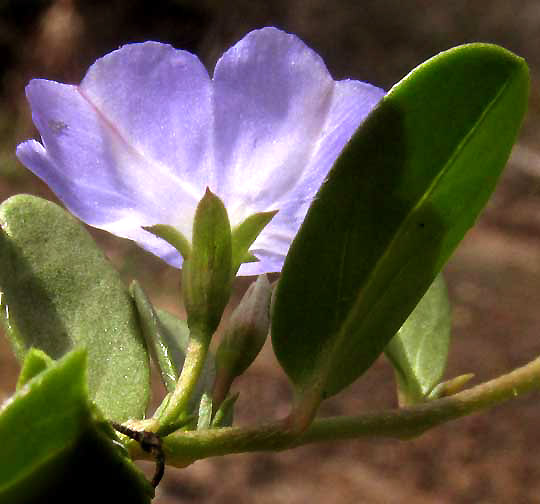
Five, white, pollen-filled anthers rose above each corolla's throat on slender filaments, as shown below:
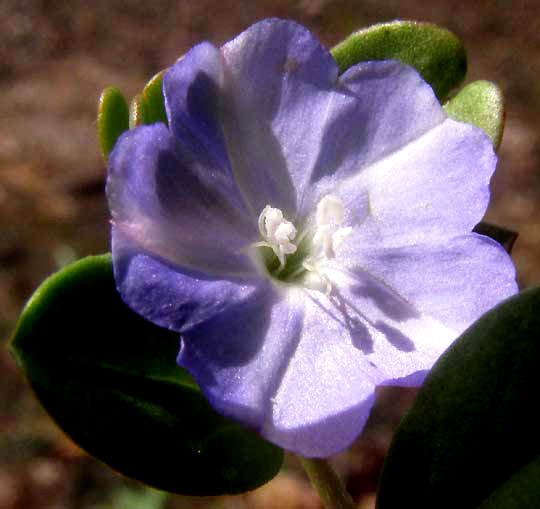
When taking that picture, something funny seemed to be going on with the stamens, so I got in as close as my camera would go, and got the fuzzy image shown below:
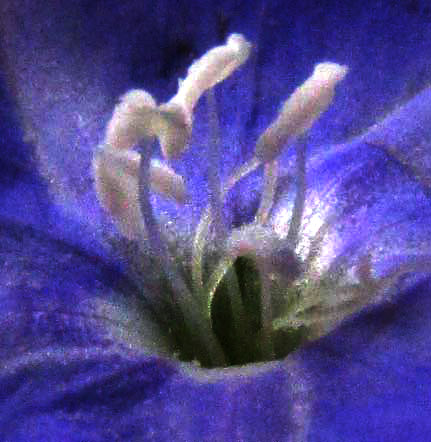
Several slender, white items other than stamen filaments seem to be issuing from the corolla's throat. Trying to figure out what was going on, a corolla and one side of the calyx were removed to show what appears below:
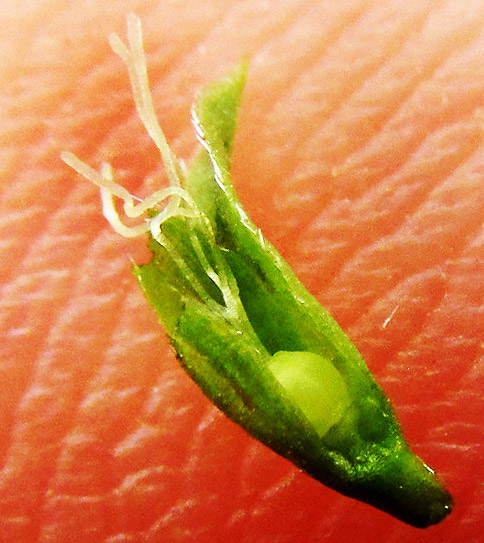
There you see an oval, green ovary at the calyx's bottom, atop which two styles arise, and each style then divides again, producing four stigma-tipped styles emerging from the calyx.
Such splitting, double styles is pretty unusual, and seeing it I thought I really did have something special. However, eventually I noticed how some of the plant's stems appeared to be growing fast across the the ground's surface, and I remembered that such saucer-shaped corollas, pleating, and style shenanigans are known in the Morning Glory Family, the Convolvulaceae, so surely this was a member of that family.
In the end, the forking double styles led me easily to the genus Evolvulus, species often known as dwarf morning glories. Six Evolvulus species are listed for Ría Lagartos Biosphere Reserve.
Of those six, the one looking like ours is EVOLVULUS CONVOLVULOIDES, which goes by several English names, including Dwarf Bindweed, Purple Evolvulus, Bindweed Dwarf Morning-Glory, and variations there-on. It occurs from the southeastern US through Mexico, Central America and the Caribbean area deep into South America.
Despite it's large distribution area, it's not weedy like many morning glories. It specializes in places like where ours occured. It's very selective in where it lives.